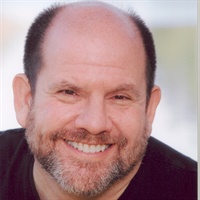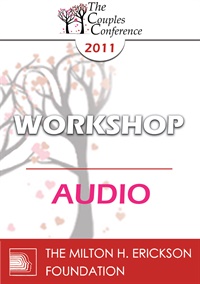CC11 Workshop 15 - “CSI” Couples Work: The Utilization of Science and Technology for Assessment and Intervention - Stan Tatkin, PsyD
- Average Rating:
- Not yet rated
- Topic Areas:
- Workshops | Couples Therapy | Psychobiological Approach to Couples Therapy (PACT) | Neurobiology
- Categories:
- Couples Conference | Couples Conference 2011 | Pioneers in Couples and Family Therapy
- Faculty:
- Stan Tatkin, PsyD, MFT
- Duration:
- 1:56:30
- Format:
- Audio Only
- Original Program Date:
- Apr 03, 2011
- License:
- Never Expires.
Description
Description: This workshop presents a psychobiological approach to couples therapy, focusing on nonverbal communication, attachment styles, and arousal regulation. Techniques include frame-by-frame video analysis, movement-based assessments, and real-time biofeedback. Practical tools like camera setup, rolling chairs, and video playback are used to enhance therapist attunement, mutual regulation, and client insight—while underscoring ethical tech use and client privacy.
Syllabus Description: This workshop focuses on the use of digital audio and video frame analysis and heart rate monitoring for gathering reliable information concerning attachment and arousal patterns within and between partners. The Psychobiological Approach to Couple Therapy® (PACT) places particular emphasis on implicit body states that drive interaction between partners. Though clinicians are trained to use their senses to pick up micro-movements and micro-expressions through the body, face, and voice, precision equipment such as digital video and biofeedback devices can often provide compelling “proof” of what the clinician sees, hears, and senses when observing partner interactions.
Educational Objectives:
- Determine if digital video recording is appropriate to their practice and if so, will be able to select and place proper equipment for this purpose in their clinical setting.
- Define and describe body and facial shifts and changes that reveal internal and interpersonal social-emotional information.
- Define and differentiate heart rate from heart rate variability and how these measures become relevant for the psychobiologically-oriented couple therapist.
*Sessions may be edited for content and to preserve confidentiality*
Credits
Handouts
| Ericksonian Learning Snapshot (276.3 KB) | 2 Pages | Available after Purchase |
Faculty

Stan Tatkin, PsyD, MFT Related Seminars and Products
Stan Tatkin, PsyD, MFT, is a clinician, researcher, teacher, and developer of A Psychobiological Approach to Couple Therapy (PACT®). He has a clinical practice in Calabasas, CA, where he has specialized for the last 15 years in working with couples and individuals who wish to be in relationships. He and his wife, Tracey Boldemann-Tatkin, developed the PACT Institute for the purpose of training other psychotherapists to use this method in their clinical practice.


